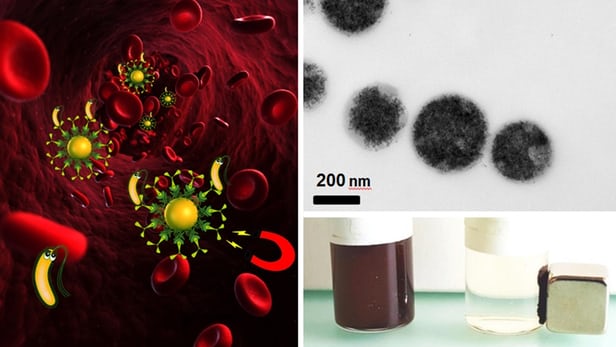
Although over half of all cases of blood poisoning prove fatal, the condition can be cured if caught early. That's why doctors typically start administering antibiotics as soon as they even suspect that harmful bacteria are present in the bloodstream. Using these medications too often, however, can lead to antibiotic resistance. With that in mind, an international team of scientists is developing an alternative method of blood purification – it involves drawing the bacteria out with magnets.
The project includes researchers from Harvard University, along with Switzerland's Empa research group and Adolphe Merkle Institute.
In an earlier study, some of the scientists coated tiny iron particles with antibodies that detect and bind to harmful bacteria. They then introduced a solution of those particles into blood containing such bacteria, with the result that the microbes stuck to the particles. When the blood was subsequently pumped through a dialysis machine, magnets were able to pull out the bacteria-laden particles, leaving "clean" blood behind.
One limitation to the process, however, lay in the fact that the antibodies could only bind with a single type of bacteria at a time – the type depended on the specific antibody being used.
This means that in a clinical setting, doctors would have to take the time to first identify what type of bacteria was present in the patient's blood, and then select the appropriate antibody before starting treatment. Additionally, if multiple types of bacteria were present, then multiple treatments using different antibodies would be required.
Now, though, a Harvard team led by Dr. Gerald Pier has created an antibody that simultaneously binds with almost all the types of bacteria commonly found in blood poisoning. In initial lab tests performed at Empa, it appears to be "promising" … although it still isn't ready for use on humans.
One concern surrounds the fact that some iron particles may remain in the patient's bloodstream after treatment. A possible solution, being developed by an Empa team led by Dr. Inge Herrmann, could be to conglomerate the individual particles into larger clusters – this would cause them to be more attracted to the magnets.
Residual iron particles may not even be a problem, however, as lab tests have shown that they break down after five days in the bloodstream.

 Previous page
Previous page Back to top
Back to top







